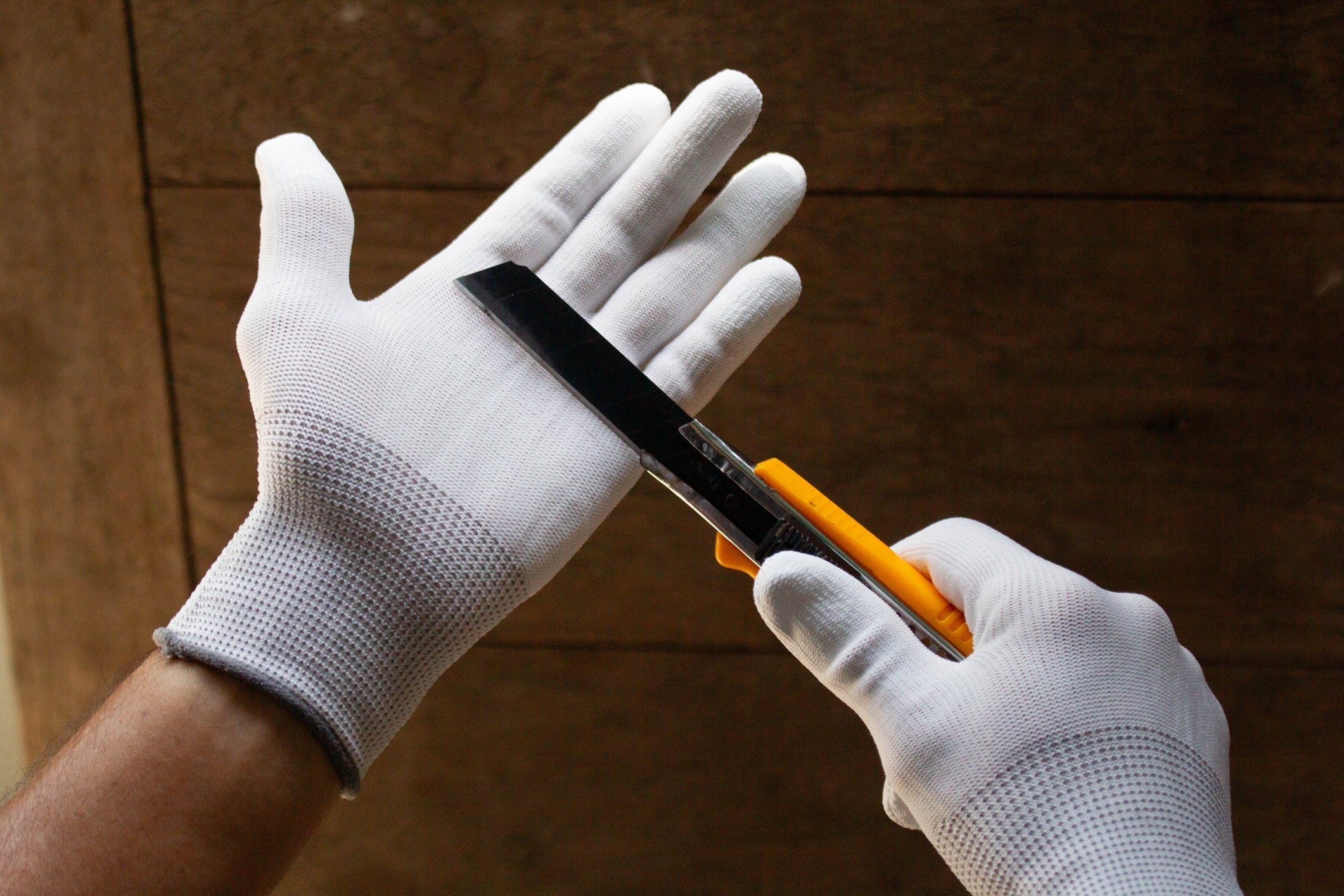Quick Summary: What Are Cut-Resistant Gloves?
Cut-resistant gloves protect workers from sharp edges, blades, and glass. They're rated by ANSI from A1 to A9, based on grams of cutting force they can withstand. Materials like Kevlar, HPPE, steel mesh, and fiberglass offer varying levels of protection for industries such as construction, auto repair, metal fabrication, and food processing. Choosing the right level and material is crucial for safety and compliance.
1. What Are Cut-Resistant Gloves?
Cut-resistant gloves are personal protective equipment (PPE) designed to reduce the risk of hand injuries from sharp tools, metal edges, and glass shards. They’re a vital part of workplace safety protocols in jobs where lacerations and punctures are common hazards.
2. ANSI/ISEA 105 Cut Levels: A1–A9
The American National Standards Institute (ANSI) classifies gloves based on the weight (in grams) required to cut through the glove’s material:
| ANSI Cut Level | Grams of Force | Protection Use Case |
|---|---|---|
| A1 | 200–499 | Light protection: packaging, warehousing |
| A2 | 500–999 | General assembly, HVAC |
| A3 | 1000–1499 | Sheet metal handling |
| A4 | 1500–2199 | Metal fabrication |
| A5 | 2200–2999 | Glass handling |
| A6 | 3000–3999 | Automotive bodywork |
| A7–A9 | 4000+ | Extreme cut protection (steel, rescue, high-risk work) |
3. Best Materials for Cut Resistance
Different glove materials offer different types of protection. Here's a breakdown:
- Kevlar®: Lightweight, heat-resistant, and durable. Great for industrial environments.
- HPPE (High-Performance Polyethylene): Cool to the touch and extremely strong. Common in food and glass industries.
- Steel Mesh: Maximum cut resistance; often used in butchering and industrial slicing.
- Fiberglass and Composite Fibers: Often blended for enhanced protection and flexibility.
4. Key Industries That Require Cut Protection
- Automotive Mechanics: Handling sharp vehicle components and tools.
- Construction: Rebar, sheet metal, glass, and utility knife exposure.
- Metal Fabrication & Welding: Sharp edges and grinding work.
- Food Processing: Slicing meat, fish, and vegetables with sharp knives.
- HVAC & Electrical: Sheet metal and tool hazards.
5. Cut Resistance vs. Puncture Resistance
They’re not the same. A glove that resists cuts may not stop a puncture from a nail or needle. If both hazards exist in your work environment, choose gloves with dual ratings (cut + puncture resistance).
6. Proper Glove Fit and Dexterity
Even the highest-rated glove is useless if it's too loose or stiff. The right fit ensures grip, comfort, and control. Most cut-resistant gloves come in multiple sizes and coatings (foam nitrile, latex, polyurethane) to match job needs.
7. Can You Wash Cut-Resistant Gloves?
Yes, but with care. Most can be machine washed in cold or warm water with mild detergent—no bleach or high heat. Always follow the manufacturer’s instructions. Damaged or shrunk gloves should be replaced immediately.
8. When to Replace Your Gloves
Replace gloves when:
- There are visible cuts, tears, or holes
- Elasticity is lost or the glove slips off
- The cut-resistant lining is exposed or damaged
9. OSHA Guidelines on Hand Protection
According to OSHA Standard 29 CFR 1910.138, employers must select and require employees to use appropriate hand protection when exposed to hazards like cuts, lacerations, abrasions, and punctures.
10. Where to Buy Cut-Resistant Gloves
We recommend browsing a wide selection of ANSI-rated gloves at:
Conclusion
Cut-resistant gloves are essential PPE for dozens of industries. By understanding ANSI levels, materials, and application-specific risks, you can choose the right glove and reduce workplace injuries. Always balance protection with comfort—and replace worn gloves promptly.
About the Author: Mick Chan
Mick Chan has been in the Safety Supplies industry for over 15 years. As a seasoned expert in OSHA compliance and safety product procurement, Mick brings practical insight to help businesses meet workplace safety standards with confidence. He graduated from Cal State LA in 2013 with a Bachelor’s in Business Administration and has spent his career supporting industries across California. Born and raised in the San Gabriel Valley, Mick understands the safety needs of diverse urban and industrial environments.

